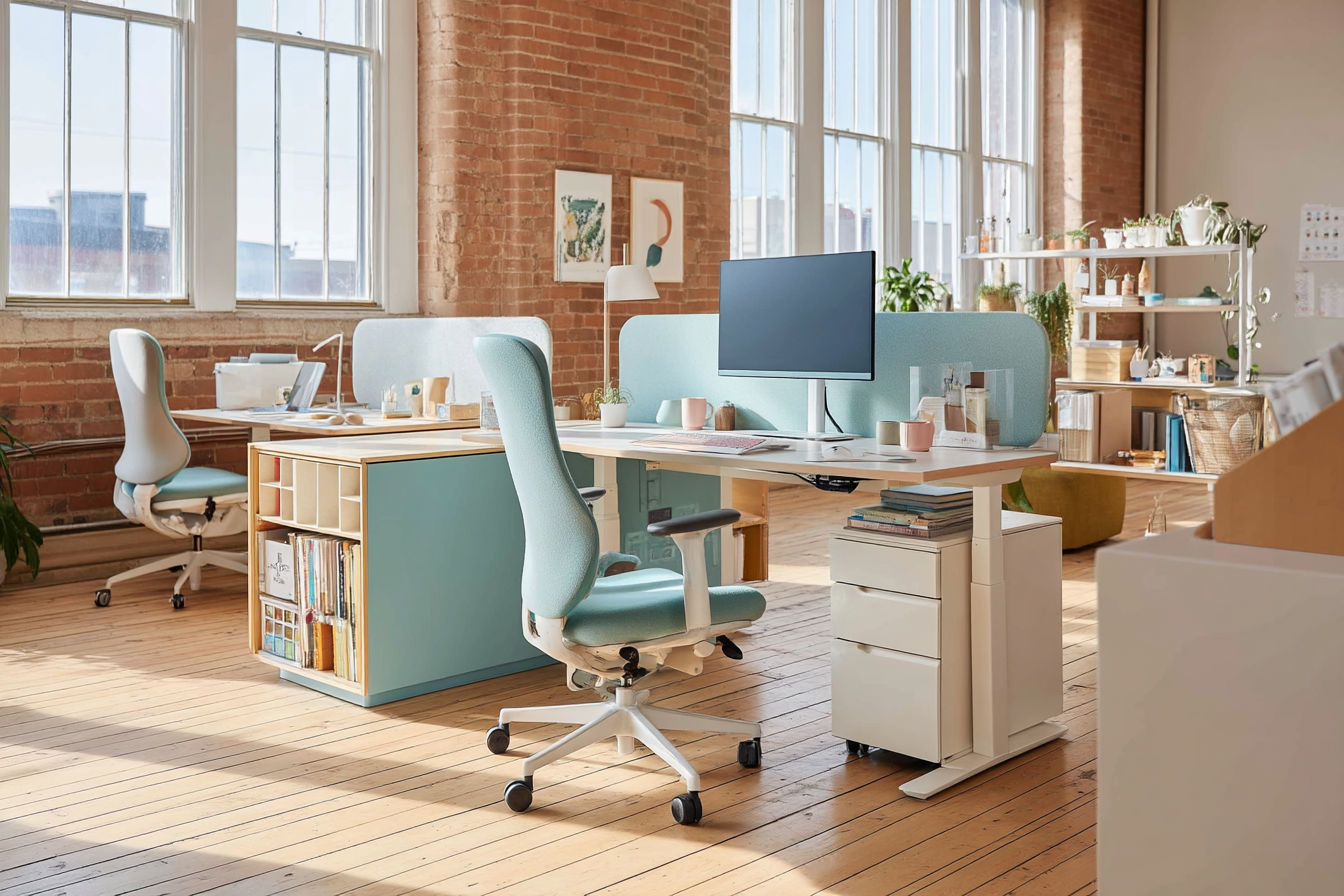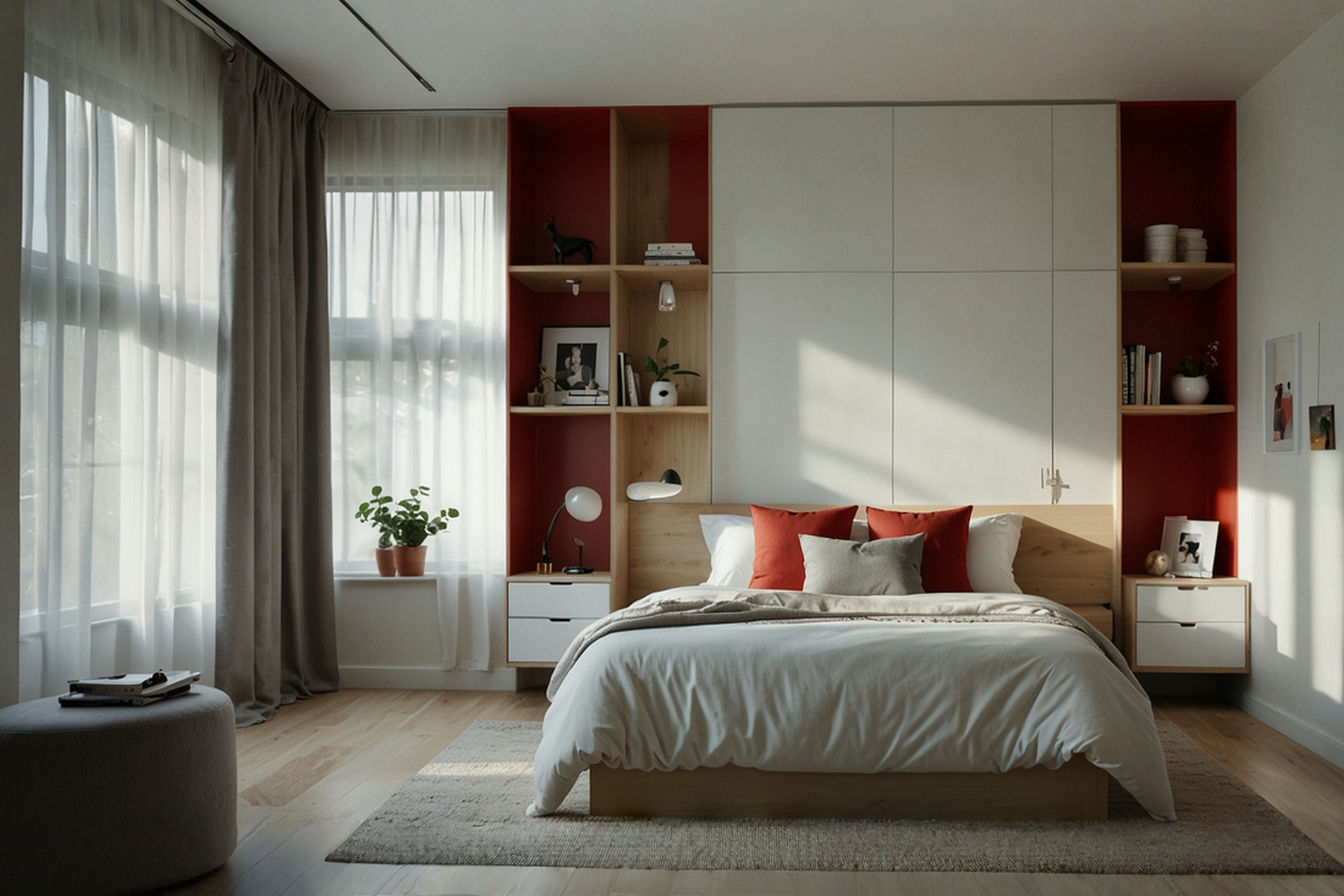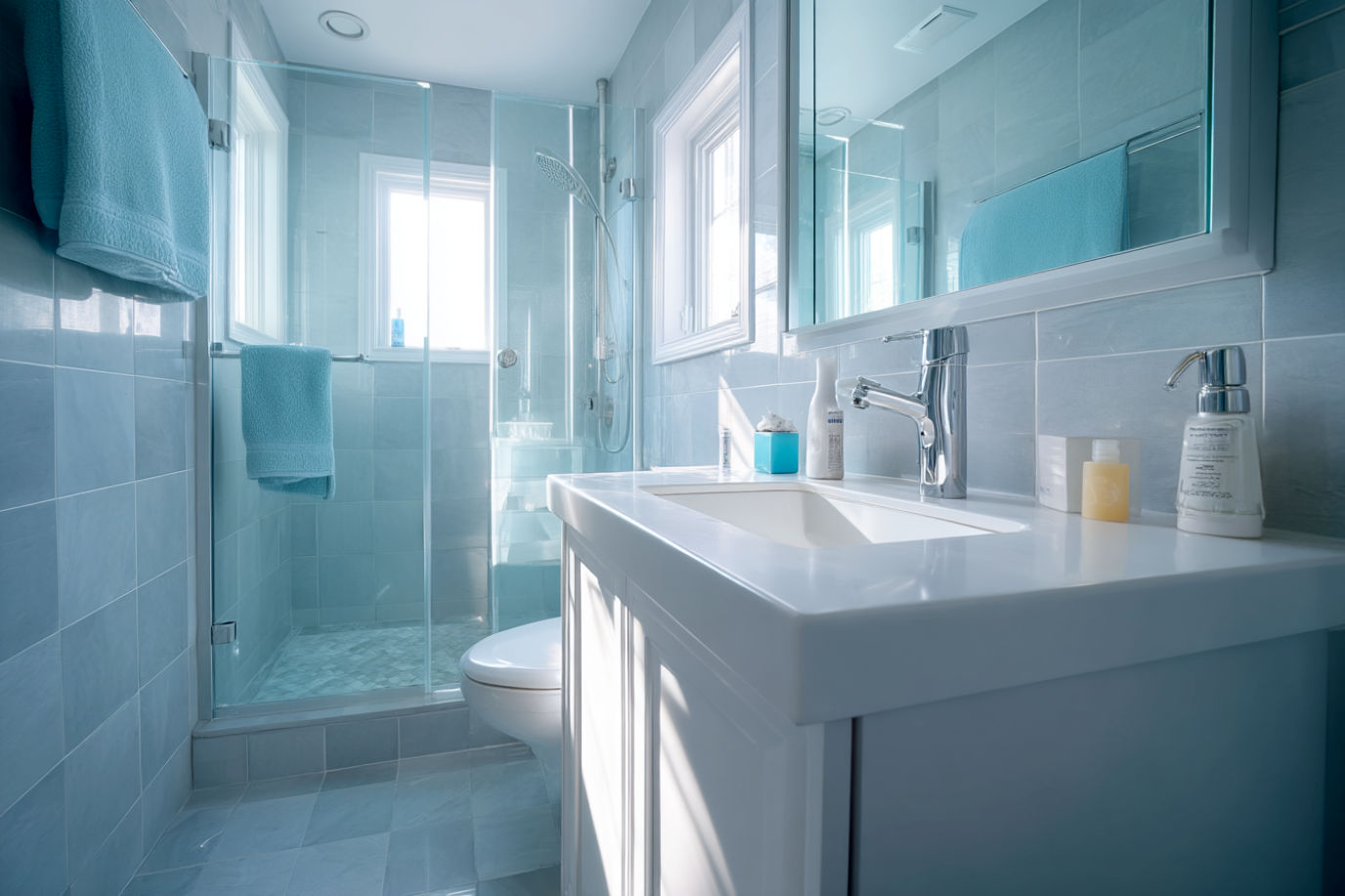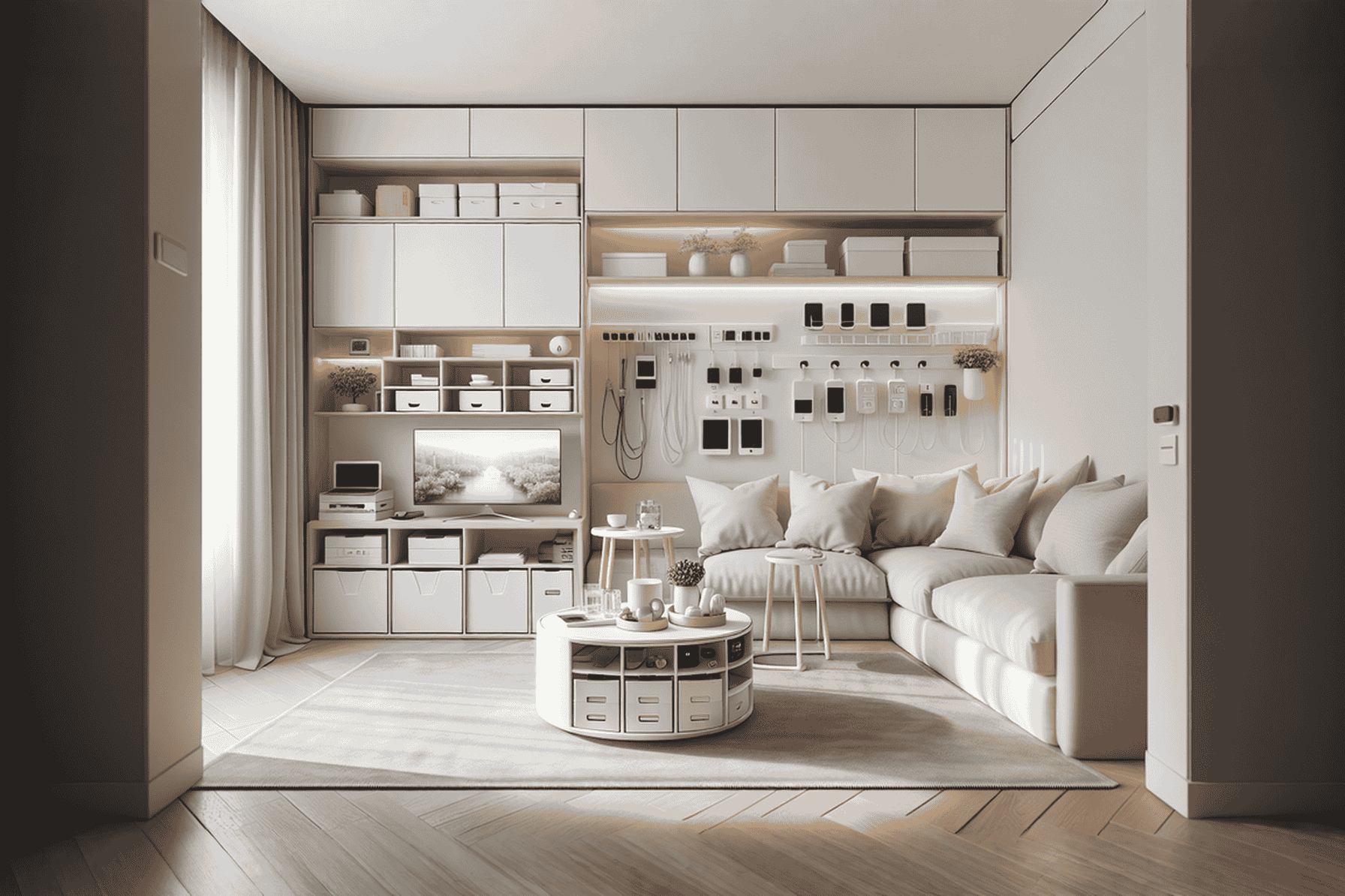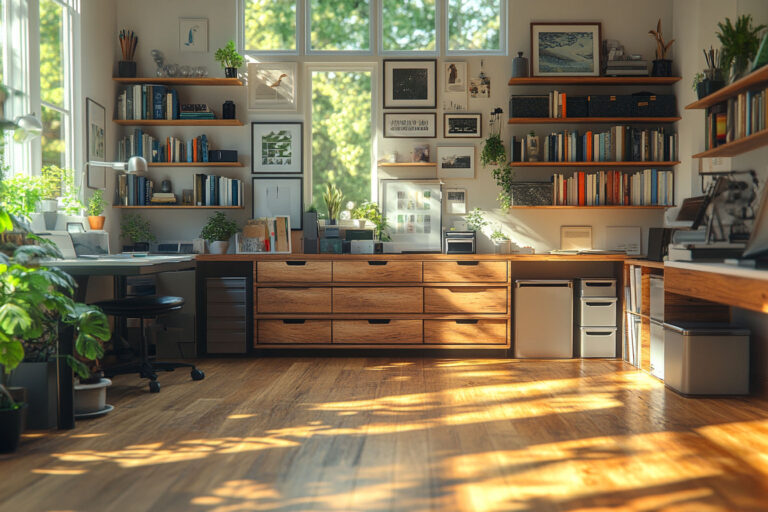This post may contain affiliate links. If you make a purchase through these links, we may earn a commission at no additional cost to you.
The shift to remote work has transformed spare bedrooms, kitchen corners, and even closets into makeshift offices across the globe. While working from home offers undeniable benefits, it also presents unique challenges—particularly when square footage comes at a premium.
Finding adequate storage in small spaces requires both creativity and strategic planning. A well-organized workspace not only enhances productivity but also helps maintain the delicate work-life balance that remote professionals strive to achieve. Without proper storage solutions, even the most dedicated remote worker can find themselves drowning in paperwork, tangled in cables, or constantly searching for misplaced supplies.
This comprehensive guide explores ingenious storage strategies designed specifically for remote workers operating in confined spaces. From vertical organization systems to multifunctional furniture and hidden storage compartments, these solutions will help you maximize every inch of your compact workspace while maintaining a professional and comfortable environment.
Understanding Your Small Space Challenges
Before diving into specific solutions, take a moment to assess your unique spatial challenges. The first step toward effective organization is understanding exactly what you’re working with and what you need to store.
Start with an honest workspace evaluation. How much square footage do you have? Which items do you use daily, and which only occasionally? Are there awkward corners or unused wall spaces that could be repurposed? This initial assessment provides the foundation for smart storage decisions.
Remote work typically involves a combination of physical and digital materials. Consider which documents truly need physical storage and which can be digitized. Technology has made paperless operations more feasible than ever, yet many professionals still require space for physical documents, reference materials, and office supplies.
Another crucial consideration is the dual functionality of many remote workspaces. Your office might double as a guest room, dining area, or part of your living room. Storage solutions must therefore not only organize your work materials but also integrate seamlessly with your home’s overall design and functionality.
Vertical Storage Solutions
When floor space is limited, the walls become your most valuable asset. Vertical storage utilizes otherwise wasted space and keeps important items accessible without consuming precious desktop real estate.
Wall-mounted shelving systems offer tremendous flexibility. Adjustable track systems allow you to customize shelf height according to your specific needs, and they can be reconfigured as those needs evolve. Install shelves above your desk for reference materials, decorative items, and supplies you use regularly but don’t need at your fingertips.
Floating shelves provide a more streamlined appearance than traditional bracket-mounted options. They create the illusion of more space while offering practical storage. Consider installing a series of floating shelves at staggered heights for visual interest that doubles as functional organization.
Pegboards have transcended their workshop origins to become stylish and infinitely customizable organization systems. A wall-mounted pegboard with an assortment of hooks, bins, and shelves allows you to create a bespoke storage solution tailored to your specific equipment. The ability to reconfigure a pegboard system as your needs change makes it especially valuable for evolving remote work setups.
For a truly space-efficient option, consider a wall-mounted fold-down desk with built-in storage. These ingenious units open to reveal a workspace complete with cubbies, shelves, and compartments for office supplies. When closed, they occupy just a few inches of depth while maintaining an attractive appearance in your living space.
Under-Utilized Spaces
Some of the most valuable storage real estate in a small space goes completely overlooked. Identifying and utilizing these hidden opportunities can dramatically increase your storage capacity without requiring additional square footage.
The back of doors offers significant untapped potential. Over-the-door organizers with pockets can hold everything from notebooks and folders to smaller accessories like headphones and chargers. For a more permanent solution, attach shallow shelves or file organizers directly to the door.
Under-desk space represents prime storage territory that often goes wasted. Rolling file cabinets designed to fit beneath standard desk heights provide accessible storage for documents and supplies. Alternatively, install simple shelving units or stacking storage boxes in this area. For extra concealment, add a fabric skirt to your desk that hides storage while adding a decorative element.
The space between studs in your walls can be transformed into recessed shelving. While this requires more significant construction, the result is seamless storage that doesn’t protrude into your room. Perfect for small items like office supplies or tech accessories, these recessed shelves make use of space that would otherwise remain empty.
Ceiling storage might sound extreme, but it works wonderfully for items you need occasionally but not daily. Hanging storage systems designed for garages can be adapted for office use, particularly in spaces with exposed beams or high ceilings. Store seasonal documents or reference materials in clearly labeled containers that can be hoisted out of the way when not needed.
Multifunctional Furniture
When every square foot counts, single-purpose furniture becomes a luxury few remote workers can afford. Multifunctional pieces effectively double your space by serving multiple needs simultaneously.
Convertible desks represent the pinnacle of multipurpose furniture. Options range from dining tables with hidden compartments for laptops and supplies to wall-mounted systems that transform from compact cabinets to complete workstations. These versatile pieces allow your workspace to disappear when the workday ends, maintaining the aesthetic and function of your living space.
Storage ottomans and benches provide comfortable seating with hidden storage beneath. These pieces work beautifully in living rooms or bedrooms that double as offices. Store reference materials, equipment you don’t use daily, or even file boxes inside, then close the lid to maintain a clean, organized appearance when colleagues join your video calls.
Nesting tables offer adjustable workspace options. Pull them apart during working hours for a expanded surface area, then nest them together when you need to reclaim floor space. Some designs include built-in compartments or shelving, multiplying their storage potential.
Murphy beds with integrated desks represent the ultimate space-saving solution for guest room/office combinations. During working hours, the bed remains hidden in the wall while the desk provides a spacious work surface. When guests arrive, the desk folds away and the bed comes down, completely transforming the room’s function.
Hidden Storage Ideas
Sometimes the best storage is the kind no one knows exists. Hidden storage solutions maintain the aesthetic of your space while keeping necessary items close at hand.
Hollow book storage offers a classically elegant solution for small items. These decorative boxes, disguised as vintage books, blend seamlessly with actual books on your shelves while concealing USB drives, small electronics, or other supplies. For the crafty remote worker, creating your own hollow book storage using outdated reference materials is an affordable alternative to purchased options.
Furniture with secret compartments has evolved from novelty to necessity for many small-space dwellers. Coffee tables with sliding tops, ottomans with hidden interior sections, and headboards with concealed storage all provide discreet places to keep work materials organized but out of sight.
Behind-art storage transforms wall decor into functional storage. Hinged artwork or photographs can conceal shallow wall-mounted cabinets perfect for storing smaller items or even creating a fold-down mini desk. This approach preserves your wall’s aesthetic appeal while maximizing its storage potential.
Dual-purpose decor items like storage baskets that double as wall art or decorative boxes that function as bookends allow you to integrate storage throughout your space without sacrificing style. By selecting items that complement your existing decor, these functional pieces become design elements rather than utilitarian storage.
Digital Solutions for Physical Storage Reduction
The most effective way to address storage limitations is often to reduce what needs storing in the first place. Digital solutions minimize physical clutter while improving organization and searchability.
Document scanning and management systems transform paper files into searchable digital archives. Portable scanners designed specifically for home offices can process multiple pages quickly, creating digital versions that require no physical storage. Establish a workflow for incoming documents—scan, categorize, and then either store essential originals or securely dispose of them.
Cloud storage integration ensures your digital files remain accessible from any device while eliminating the need for extensive local storage. Services like Google Drive, Dropbox, and OneDrive offer substantial free storage with affordable upgrade options. Organizing your cloud storage with a consistent folder structure and naming convention prevents digital clutter from replacing your physical mess.
Cable management solutions address the tangled chaos that often accumulates around remote workstations. Cable sleeves, under-desk trays, and adhesive clips keep wires organized and out of sight. Wireless peripherals further reduce cable clutter, while charging stations consolidate power needs into a single, organized location.
Digital note-taking applications replace physical notebooks and loose papers. Apps like Notion, Evernote, and OneNote allow you to capture, organize, and search notes across all your devices. By transitioning to digital note-taking, you eliminate the need to store and organize multiple notebooks and loose papers.
Micro-Storage Solutions
Even the smallest items need proper homes to prevent desktop clutter. Micro-storage solutions organize your immediate workspace for maximum efficiency and minimal visual distraction.
Desktop organizers with vertical orientations maximize your workspace real estate. Look for options with multiple compartments that separate items by function and frequency of use. Models that rotate or adjust allow you to customize the arrangement based on your specific needs.
Drawer dividers and organizers transform chaotic catchalls into organized storage systems. Adjustable dividers create custom compartments perfectly sized for your specific supplies. Consider transparent organizers that allow you to see contents without rummaging through drawers.
Magnetic storage utilizes metal surfaces that might otherwise go unused. Magnetic strips mounted under shelves or on the sides of metal furniture hold paper clips, scissors, and other small metal items. Magnetic containers can attach to file cabinets or metal desk frames, creating additional storage without consuming surface area.
Adhesive storage pods attach to the undersides of shelves or desks, creating hidden compartments for items you want accessible but not visible. These removable storage options work well for rental spaces where permanent installations aren’t possible.
Monitor stands with built-in storage raise your screen to an ergonomic height while creating organization space beneath. Options range from simple platforms with compartments to sophisticated designs with drawers and cable management systems integrated directly into the stand.
DIY Storage Projects
Custom solutions often provide the most effective storage for unusual spaces or specific needs. These DIY projects require minimal tools and materials but deliver maximum organizational impact.
Upcycled containers transform everyday items into specialized storage. Coffee cans covered in decorative paper become pen holders, while mason jars mounted under shelves store small supplies. Wooden wine crates stacked and secured create unique modular shelving with built-in compartments.
Custom cord organizers made from binder clips attached to the edge of your desk keep cables accessible but controlled. Label each clip to identify which cable is which, eliminating the frustration of searching for the right connection.
Corner floating shelves utilize awkward spaces most pre-made solutions ignore. By cutting triangular shelves that fit precisely into corners, you create storage in otherwise wasted areas. Install a series of these shelves from floor to ceiling for a striking and functional storage wall.
Monitor riser with hidden drawer provides ergonomic benefits while concealing desktop clutter. This weekend project requires only basic woodworking skills but creates a dual-purpose solution that improves both comfort and organization.
Pegboard accessories customized for specific items ensure everything has a designated place. Creating custom holders from wire, wood, or 3D-printed materials allows you to accommodate uniquely shaped items that commercial organizers don’t address.
Aesthetic Considerations
Storage solutions should enhance, not detract from, your home environment. Thoughtful design integration ensures your workspace remains both functional and visually appealing.
Color coordination between storage elements and your existing decor creates cohesion rather than contrast. Consider painting mismatched storage containers a uniform color that complements your space. For a more subtle approach, choose storage in neutral tones that blend rather than stand out.
Texture mixing adds visual interest to utilitarian storage. Combine woven baskets, smooth acrylic organizers, and natural wood elements to create a layered, designed look rather than a purely functional arrangement. This approach makes your storage part of the room’s design rather than a necessary intrusion.
Consistent container styles create visual harmony even in mixed-use spaces. Select a signature style—perhaps wicker baskets or fabric bins with leather tags—and use it throughout your storage solutions. This consistency creates a designed look even when the contents vary widely.
Strategic concealment and display decisions determine which items remain visible and which stay hidden. Store visually pleasing items like decorative boxes, attractive notebooks, or color-coordinated binders on open shelving. Reserve closed storage for utilitarian supplies and equipment that would create visual clutter.
Incorporating plants and personal items among storage elements softens their utilitarian appearance. A small plant on a shelf of reference materials or family photos integrated with organized supplies creates a workspace that feels personal rather than purely functional.
Budget-Friendly Options
Effective storage doesn’t require significant investment. These affordable solutions deliver impressive organizational results without straining your finances.
Dollar store bins and baskets provide surprisingly durable and attractive storage options. Group similar supplies in matching containers, then label clearly to maintain organization. These inexpensive solutions work particularly well inside drawers or on shelves where they experience minimal wear.
Repurposed household items cost nothing but deliver custom storage. Shoe boxes covered in decorative paper make excellent drawer dividers, while emptied food containers with labels removed become clear storage for small items. Muffin tins and ice cube trays repurposed as desk organizers keep tiny items like paperclips and thumbtacks neatly separated.
Tension rods installed in vertical spaces create adjustable shelving for minimal cost. Use them between cabinets to create paper storage, inside drawers as dividers, or in closets to maximize vertical organization. Their adjustability makes them perfect for rental spaces where permanent installations aren’t permitted.
Cardboard magazine files offer inexpensive document storage that can be customized to match your decor. Cover them with contact paper in attractive patterns or paint them to coordinate with your space. Group them on shelves or under your desk to keep paperwork organized and accessible.
DIY pegboard systems cost a fraction of commercial versions but offer the same versatility. A piece of pegboard, some hooks, and a few small containers create a customizable wall organization system. Paint the pegboard to match your decor for a more integrated appearance.
Maintaining Your Organized Space
Creating storage solutions is only the first step; maintaining organization requires ongoing attention and established routines.
The “one in, one out” rule prevents accumulation of unnecessary items. For every new supply, piece of equipment, or reference material that enters your workspace, remove something of equivalent size. This simple practice maintains equilibrium in your storage capacity.
Weekly reset routines prevent gradual disorganization. Schedule 15 minutes at the end of each work week to return items to their proper homes, file loose papers, and clear accumulated clutter. This regular maintenance prevents the need for major reorganization projects.
Quarterly purges keep your storage efficient and relevant. Review reference materials, archived documents, and supplies every three months. Discard outdated information, digitize documents you’ve kept “just in case,” and donate unused supplies. This practice ensures your limited storage space contains only items you truly need.
Storage labels eliminate guesswork and encourage consistent organization. Clear labeling makes it easier to maintain systems, particularly for containers that aren’t transparent. Consider removable labels for storage solutions that might change function as your needs evolve.
Designated “limbo” containers provide temporary homes for items you haven’t yet categorized. Rather than letting these items accumulate on surfaces, create a specific place for them with a rule: when the container fills, you must sort and properly store its contents before adding anything new.
Real-Life Examples
Abstract storage principles come to life through real-world applications. These examples demonstrate how remote workers have transformed challenging spaces into functional workstations.
The converted closet office demonstrates extreme space efficiency. By removing the closet door and installing a floating desk with wall-mounted shelving above, one graphic designer created a dedicated workspace that disappears behind a curtain when not in use. Pegboard sides provide vertical storage for frequently used supplies, while a rolling cart beneath the desk offers mobile storage that can be pulled out during work hours and tucked away after hours.
The multi-functional living room seamlessly integrates work and living space. A content writer uses a secretary desk that closes to conceal work materials when entertaining. Floating shelves installed in a grid pattern hold both decorative items and essential reference materials, categorized by attractive fabric bins. A storage ottoman serves as both coffee table and filing cabinet, with clearly labeled hanging folders inside.
The bedroom workspace maintains separation between professional and personal space. A financial analyst installed a Murphy desk that folds down during work hours and disappears afterward, preserving the bedroom’s restful atmosphere. A formerly decorative ladder now serves as vertical file storage, with fabric pouches hanging from each rung. Under-bed rolling storage containers hold archived materials and rarely used equipment.
The kitchen command center makes dual use of existing space. A project manager converted a kitchen corner into a compact workstation by installing a corner floating desk that aligns with the counter height. Cabinet space repurposed with specialized organizers stores office supplies, while a decorative magnetic board above the desk holds important notes without consuming surface space.
Conclusion
Creating effective storage in small spaces requires creativity, strategic thinking, and ongoing maintenance. By utilizing vertical space, repurposing overlooked areas, choosing multifunctional furniture, and embracing digital solutions, remote workers can establish organized and professional workspaces regardless of square footage limitations.
Remember that the perfect storage solution combines functionality with aesthetics. Your workspace should serve your professional needs while integrating harmoniously with your home environment. The most successful storage systems reflect your specific requirements rather than following one-size-fits-all approaches.
Start with a thorough assessment of your needs, implement solutions that address your unique challenges, and establish routines that maintain your organized space. With these strategies, even the smallest workspace can support productive and professional remote work without overwhelming your living environment.
The effort invested in creating proper storage solutions pays dividends through increased productivity, reduced stress, and enhanced work-life balance. In the world of remote work, where the line between professional and personal space often blurs, thoughtful organization becomes not just a convenience but a necessity for long-term success.

